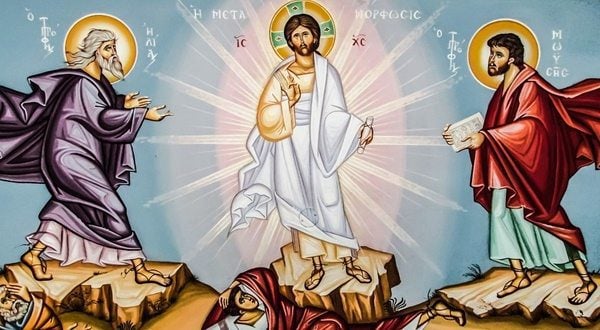Welcome to Part 2 in our series in which curriculum writers discuss their approach to teaching atonement. In Part 1, we heard from Catherine Maresca and her approach to letting the faith of pre-school children shape our own theology. Today we hear from John Stonecypher: pastor, dad, blogger and inspired curriculum designer. His weekly conversations for pre-teens are excellent models for home or church school conversations. Like Catherine, John takes the children as his starting point, engaging with them around the stories that they are already hearing.
As parents who are hoping to teach our children about living into the peace of Christ, we can be deeply troubled by movies marketed to pre-teens that feature superheroes using violence to combat villains. How do we counter the glorification of violence in entertainment media without overreacting, making rules we can’t possibly enforce, or stifling all conversation because our kids can’t admit that they are watching this stuff?
John suggests that we allow those stories to be a central part of our conversations with our kids. Rather than sternly opposing them, we can allow the rich diversity of stories out there to lead us into deep, meaningful conversations about our faith. After all, the best way to prepare our kids to make sense of competing stories about violence is to do it with them. John’s online curriculum is called “We Make the Road With Kids,” a weekly email guide for exploring the Bible with children, synced with the weekly readings and themes in Brian McLaren’s We Make the Road by Walking.
Here at TNA, we believe that despite persistent depictions of violence as good or divine, the Cross reveals that it is humans who perpetrate violence and God who endures it and forgives us for it. We hope that whether you are a parent or church school teacher you will find John’s curriculum to be a valuable resource for helping our children navigate these competing narratives with grace and loving kindness.
Geeks at the Cross
By John Stonecypher
 As GeekDad to my little flock of geeklings, I am the teller of the stories that blow our minds – Star Wars and Spider-Man, the Big Bang and evolution, how to defeat the Ender Dragon in Minecraft, and what happens when you pour vinegar on baking soda. This galaxy of stories revolves around a central core – those ancient stories we call “Sacred,” the stories about how Infinity named itself and dwelt among us, and how that changes everything.
As GeekDad to my little flock of geeklings, I am the teller of the stories that blow our minds – Star Wars and Spider-Man, the Big Bang and evolution, how to defeat the Ender Dragon in Minecraft, and what happens when you pour vinegar on baking soda. This galaxy of stories revolves around a central core – those ancient stories we call “Sacred,” the stories about how Infinity named itself and dwelt among us, and how that changes everything.
“How that changes everything” (in other words, “Atonement”) will be the topic of our Good Friday family Bible talk, and our approach will be guided by 3 principles:
1. Embrace the multiplicity of narratives. Star Wars and Star Trek have fundamentally different views of reality, but that doesn’t mean we can’t love them both and be illumined by both. Some situations require a willingness to believe that reconfiguring a tricorder can solve any problem. Other situations require us to just use the Force. A healthy mind needs many stories, just like a healthy planet needs many species. How does Atonement work? Our various sacred stories about it are… well… various: When God gets pissed off, somebody has to die. Or maybe God wants mercy, not sacrifice? When you have an enemy, send Moses or Batman after them, and then sit back and observe how punching produces justice. Or maybe your enemy is dangerous to you because he doesn’t have his own fig tree, so maybe you should buy him one? The point is that our stories don’t all agree with each other about everything, but we don’t need to feel threatened by that.
2. Let the stories talk to each other. Is Superman faster than The Flash? Is Samson’s strength more comparable to Captain America or The Hulk? Can natural selection co-exist peacefully with the Beatitudes? What can Jesus teach Gandalf and Super Mario about the art of defeating evil? This is where we reap the benefits of diverse narratives. Every story is a little model of the universe, a little theory about how the real world works. Joshua committed genocide based on the idea that it would produce peace. And it worked. Sort of. For a little while. Perhaps his model of the universe needs to be expanded upon. Luckily, we have lots of other models to try out!
3. It’s okay to identify with some stories more than others. My evangelical upbringing warned me against “picking and choosing” in the Bible, and then proceeded to teach me the small subset of stories and interpretations that evangelicals choose to emphasize. The truth is that we live in a galaxy of stories, and like celestial objects, some stories are bigger than others. It takes wisdom and responsible judgment to recognize one story as a supermassive star and another story as a minor asteroid orbiting it. If stories are models of reality, it’s up to us to discern which models work best for explaining the situations we find ourselves in.
When it comes to our many stories about Atonement, we see the story of the Cross as holding the most comprehensive explanatory power for the world we live in. Our apologies to Moses and Batman, but “punching the bad guys” has really not produced the positive results predicted by their theory. In fact, the story of Jesus exposes their theory as little more than “punching somebody for the benefit of everybody else.”
With each weekly conversation, we watch a Youtube playlist I’ve prepared in advance – pulling together lots of different stories and letting them talk amongst themselves:
God is not like He-Man pounding the crap out of Skeletor. Instead, God is the one being pounded, and I am the one wearing fur underpants in public. If we are right to embrace the Cross as an accurate model of how Humanity relates to Divinity, then Brian McLaren is right: Everything must change.
About John Stonecypher
John is the creator of “We Make the Road With Kids,” a weekly email guide for exploring the Bible with children, synced with the weekly readings and themes in Brian McLaren’s We Make the Road by Walking. Each week, the email content emerges from John’s weekly Bible conversations with his sons, ages 10 and 12. With their family Bible studies arranged around playlists of their favorite Youtube video clips, their objective is “to learn to love the Bible like we love Star Wars.”
After 7 years as a pastor, John now focuses on being “a husband and a dad, with some preaching and writing on the side.” “We Make the Road With Kids” is one initiative of his larger project at www.GeekedOutSoul.com, a blog seeking to articulate “a real-world spirituality of Wonder for a new kind of Christian family.”











